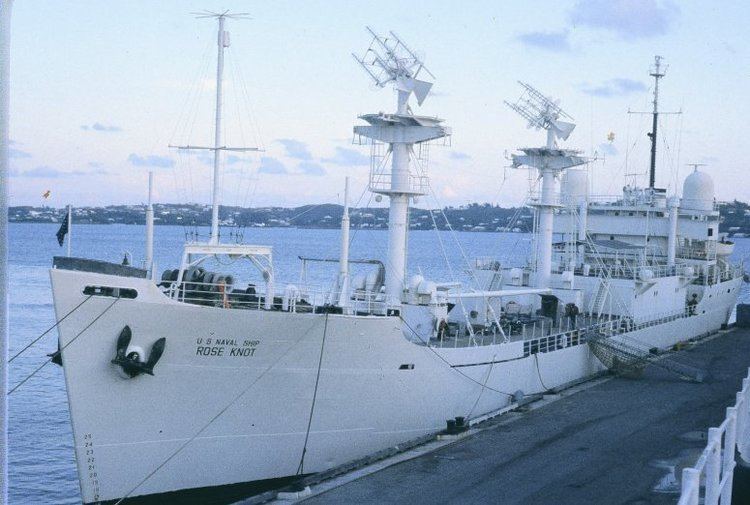Name USNS Rose Knot Completed May 1945 Length 103 m Tons burthen 5.525 million kg | Namesake A name retained In service c. 1958 Tonnage 3.054 million kg Builder Beaumont | |
 | ||
Laid down date unknown, as a type (C1-M-AV1) hull, MC hull 2466 Acquired by the U.S. Navy in 1964 | ||
USNS Rose Knot (T-AGM-14) was a missile range instrumentation ship which operated as USAFS Rose Knot on the U.S. Air Force's Eastern Test Range during the late 1950s and early 1960s. Rose Knot operated under an Air Force contract with Pan American Airways Guided Missile Range Division headquartered in Cocoa Beach, Florida.
Contents
Rose Knot, assigned to the South Atlantic Ocean and the Caribbean area, provided the Air Force with metric data on intercontinental ballistic missiles launched from the Cape Canaveral Air Force Station (CCAFS) in Florida.
Rose Knot functioned as a telemetry station located off the coast of Africa at 5N 10W for Mercury Atlas 6, the mission in which John Glenn became the first American to orbit earth. For the Gemini Program, it served as a primary tracking station (call sign RKV) off the coast of Peru.
Rose Knot operated in the intercontinental ballistic missile re-entry area near Ascension Island, and was home-ported out of Recife, Brazil.
Acquisition by the Navy
Rose Knot was acquired from the U.S. Air Force by the U.S. Navy in 1964.
Operational data
Operational data while on U.S. Navy service on this vessel is lacking at DANFS.
Inactivation
Rose Knot was struck from the Navy List 9 October 1969, and was disposed of by MARAD on 28 June 1977.
